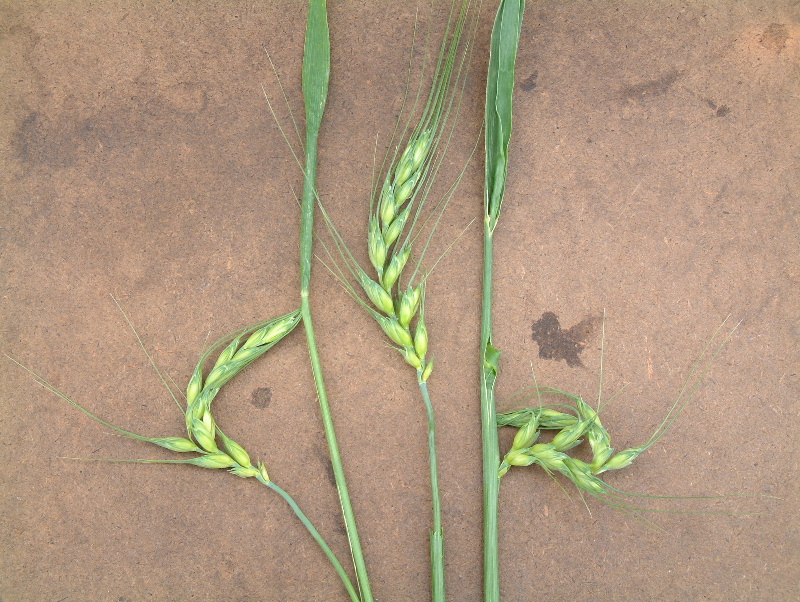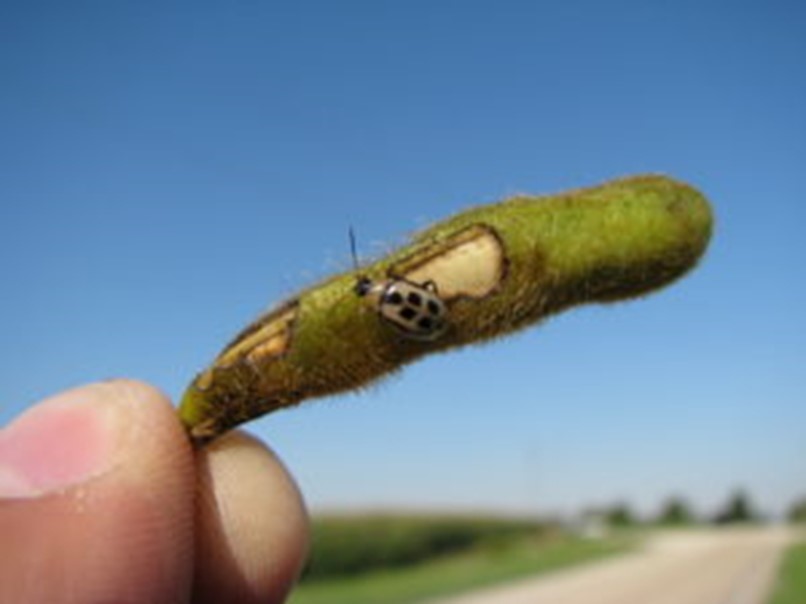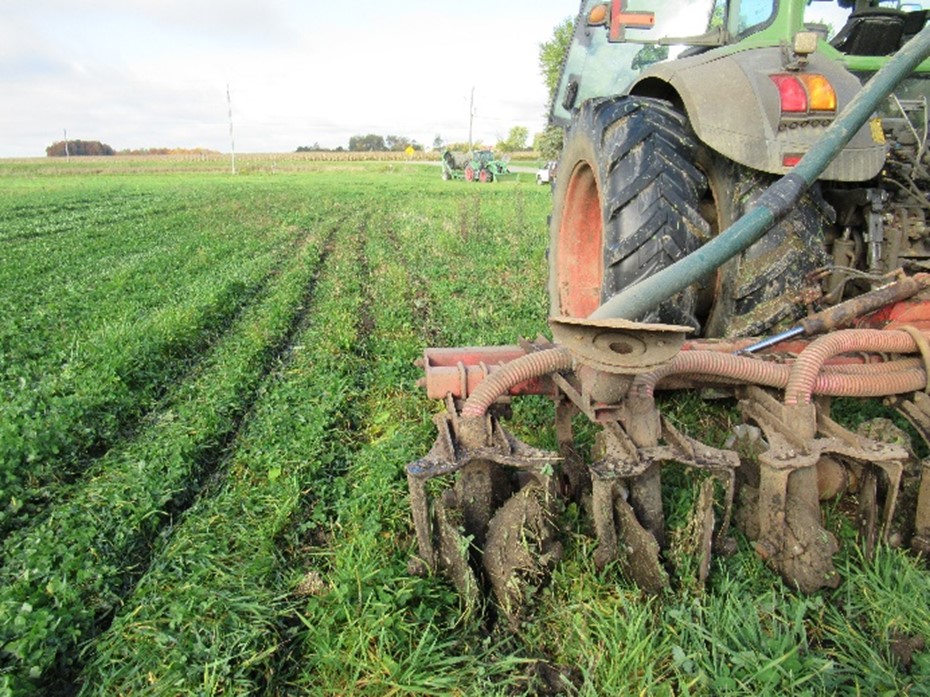Forage Options Following Wheat
With winterkill, winter injury and low first-cut yields in many parts of Ontario as well as higher land costs, there is interest in following winter wheat and other cereals with a forage crop to help supplement inventories. Not only can this approach produce some extra feed, it also provides cover crop benefits. There are a few double-crop forage options […]
Herbicides, Fungicides, Nitrogen and Sulphur – Prioritizing trips across your winter wheat fields this spring

Joanna Follings, Mike Cowbrough, Peter Sikkema, Dave Hooker and Peter Johnson Mother nature has finally awarded us with some sun and warmer temperatures which will hopefully get the remaining winter wheat stands off to the races. However, as we get out into the fields some are questioning what to prioritize and what practices to avoid […]
Common Questions Related to Dealing with Sulphur Deficiency Symptoms in Winter Wheat

This article was written by Joanna Follings, OMAFRA Cereal Specialist and Mike Cowbrough, OMAFRA Weed Specialist-Field Crops Q: Can I mix ammonium thiosulphate (ATS) with herbicides and fungicides to address sulphur deficiency symptoms or should I apply it separately with streamer nozzles? A: With reductions in atmospheric sulphur deposits, Ontario research has found significant sulphur […]
Should 2,4-D be used to control weeds in emerged winter wheat during the fall?

Co-written by Joanna Follings, Cereal Specialist Should you use 2,4-D to emerged wheat in the fall to control weeds? The short answer is no. First, the label clearly states under the “Application Timing” section: “Do not apply to seedling winter cereals in the fall.” Second, there are other labelled and less injurious herbicide options that provide […]
Watch for Black Cutworm Injury
Some US states to our south have been reporting high numbers of black cutworm moths in their pheromone traps and are starting to see some black cutworm injury in newly emerging corn fields. These moths are carried into Ontario via storm fronts. Once they arrive the adult moths look for weedy patches in fields to […]
What to Watch for in Wheat
Low levels of armyworm, cereal leaf beetles and grass sawflies have been spotted in various wheat fields over the last week. Scout to make sure these don’t get out of hand. With any of these, protecting the flag leaf is most important. Armyworm and grass sawflies clip the wheat head off too. Armyworm feed at […]
Herbicide Injury in Soybeans: 2013 SW Diagnostic Days
The following 10 herbicide injury related scenarios where showcased at the 2013 South West Diagnostic Days held at the University of Guelph, Ridgetown Campus. These scenarios are either duplications of common mishaps that have occured in Ontario or a “look and see” based on farmer or agronomist query. It is important to point out that […]
When I apply 28% UAN to winter wheat can I also add a herbicide?
Co-Authors: Dr. Peter Sikkema (University of Guelph) Growers looking to optimize efficiency of field operations often inquire about applying a herbicide with 28% urea ammonium nitrate (UAN) as a carrier. In theory it makes sense. An application of 28% UAN at 400 L/ha (42 US gal/ac) as a carrier with a herbicide would save a […]
Evaluating Winter Wheat Plant Stands
Winter wheat is one of the few crops that provide a second opportunity to assess the crop in spring and replant to another crop if winter survival is not acceptable. Assess the wheat crop during April and early May. Leave the replant decision as late as possible to accurately determine plant stand and plant health. […]
Stink Bug Injury in Corn
On occasion we see this odd looking injury in corn in Ontario. It can be deceiving as the culprit that did the damage is usually long gone. Only once the whorl of the corn opens up is the damage noticeable. Stink bug injury is often confused with mechanical injury from the sprayer or even herbicide […]
Is it too early for nitrogen?

A warmer than normal winter coupled with dry weather through February has led to surprisingly good field conditions in much of southern Ontario. While it looks like it could be an early spring, we know that the weather can change rapidly this time of year. Some are questioning whether it makes sense to take advantage […]
2023 Soybean Seasonal Summary

To date the provincial average yield reported by Agricorp for 2023 is 53 bu/ac. This number will be updated as more acres are reported. For comparison the 10-year average farm yield is 48 bu/ac. Seeded acreage was also relatively high at 2.91 million acres. The Agricorp floating claim price was $16.56/bu. Canada is the world’s […]
Crop Report – Week of September 11th, 2023

Bacterial infections in dry beans Growing conditions this season have been ideal for certain bacterial diseases. Adzuki beans in a few different regions are exhibiting symptoms of bacterial brown spot (BBS), and in some cases the injury is severe. Symptoms on leaves appear as small necrotic lesions with a yellow margin (Figure 1). As symptoms […]
Crop Report – Week of August 28th, 2023

What Are Potential Impacts to Field Crops from Wildfire Smoke in 2023? Smoke from northern Ontario and Quebec wildfires was prevalent across Ontario for several weeks in June and early July. While a smoky haze was often visible during these weeks (Fig. 1), the heaviest days carried a campfire-like smell and reportedly even reduced visibility […]
Crop Report – Week of July 24th, 2023

Getting to Know your Manure with a Manure Analysis The “magical” qualities of manure and organic amendments for providing long-term benefits have been well documented, especially for maintaining and improving soil organic matter. Sourcing off farm manure and organic amendments has become more difficult and expensive with the increased interest in improving soil health, therefore […]